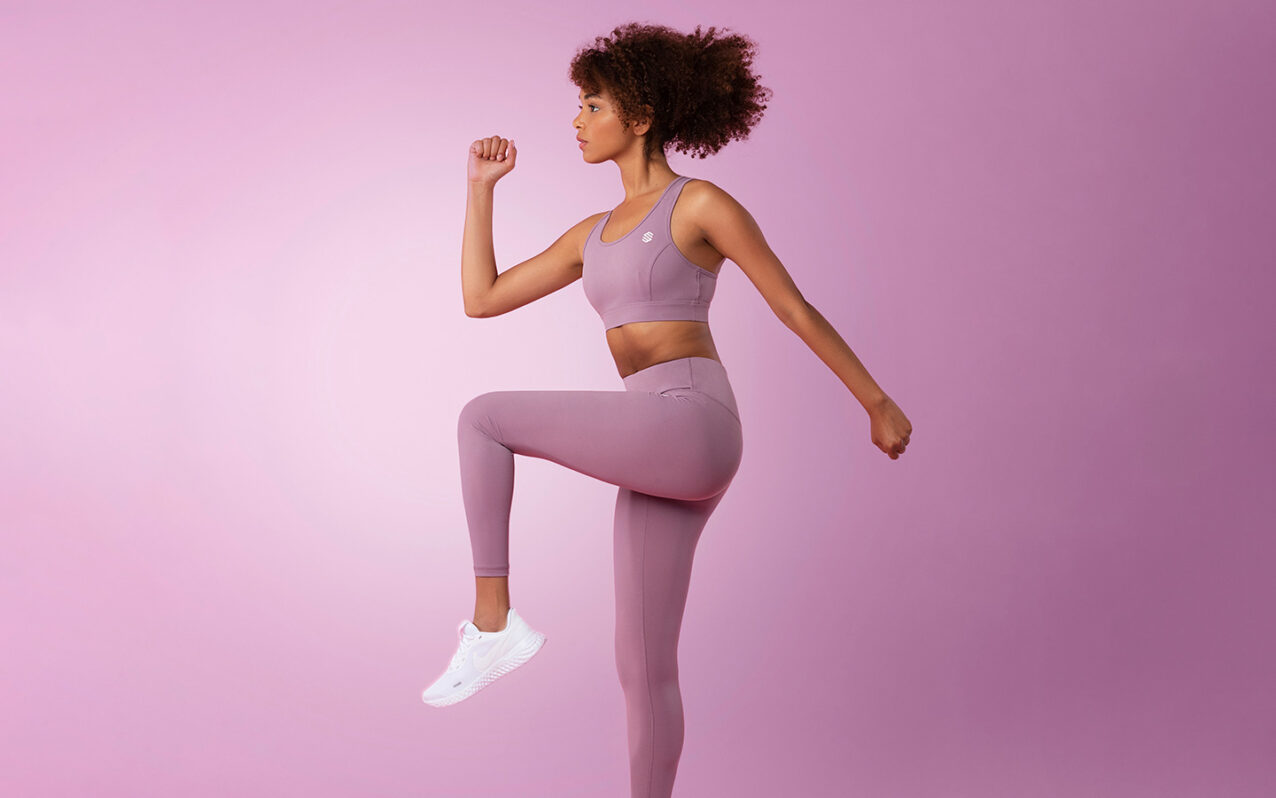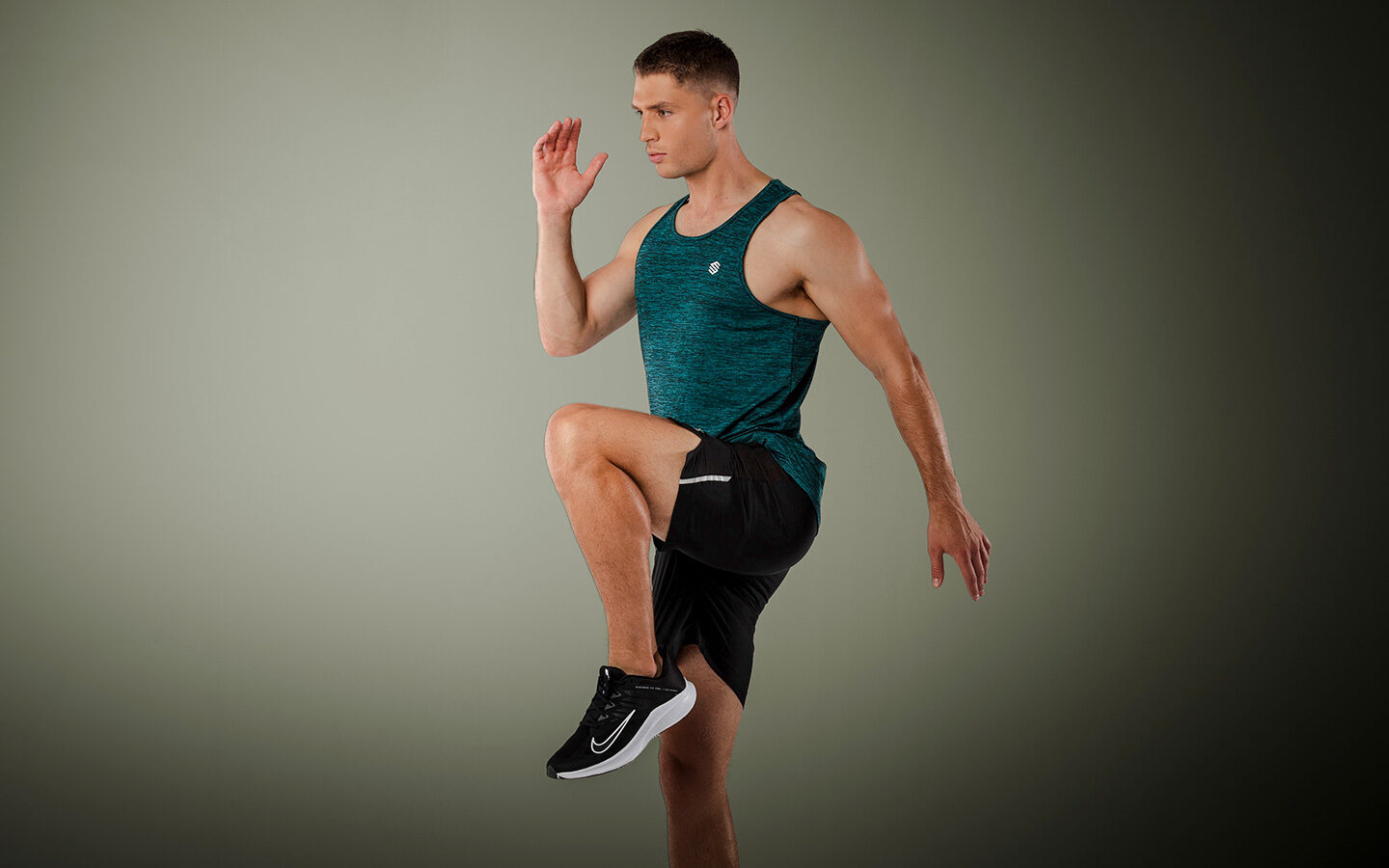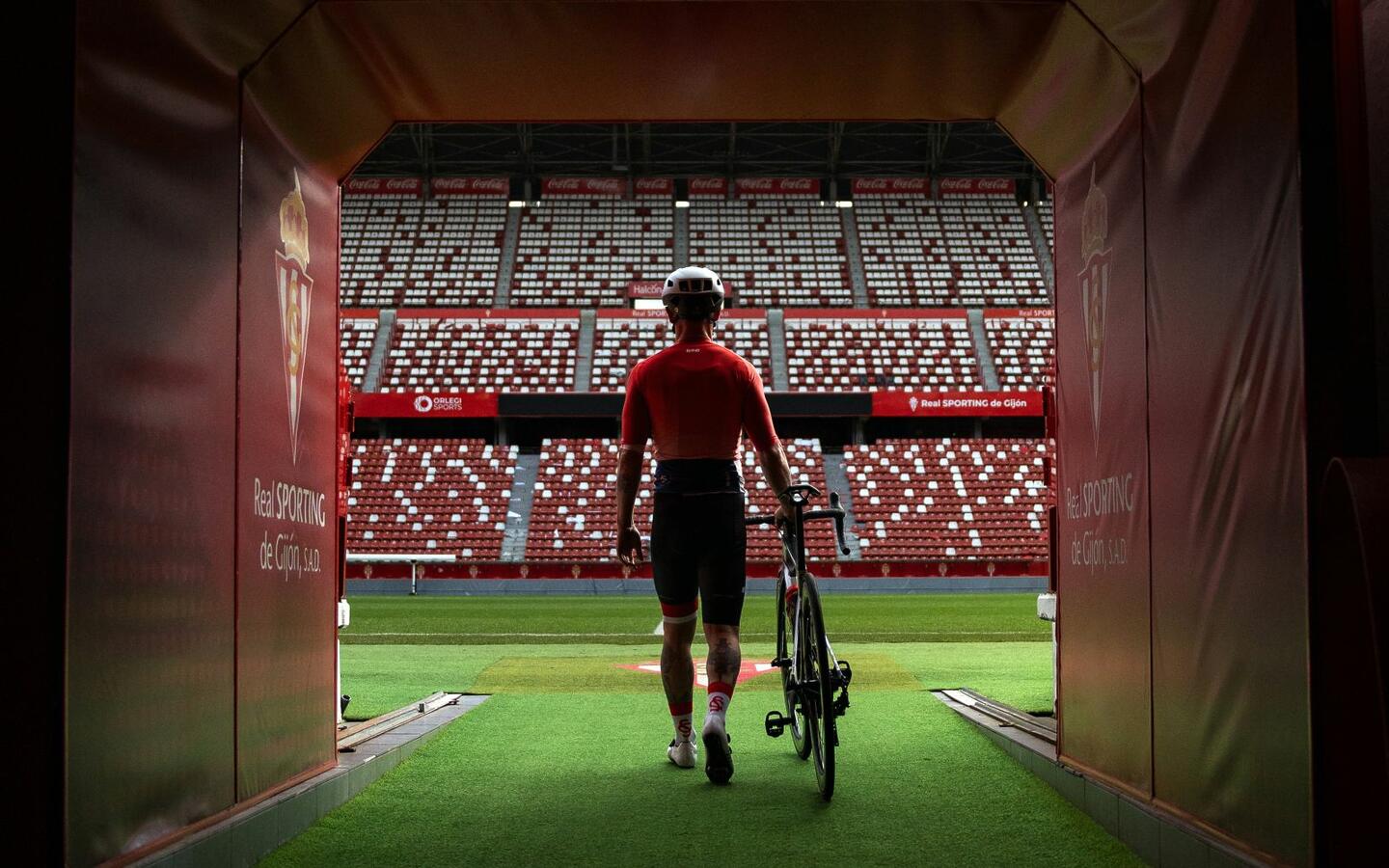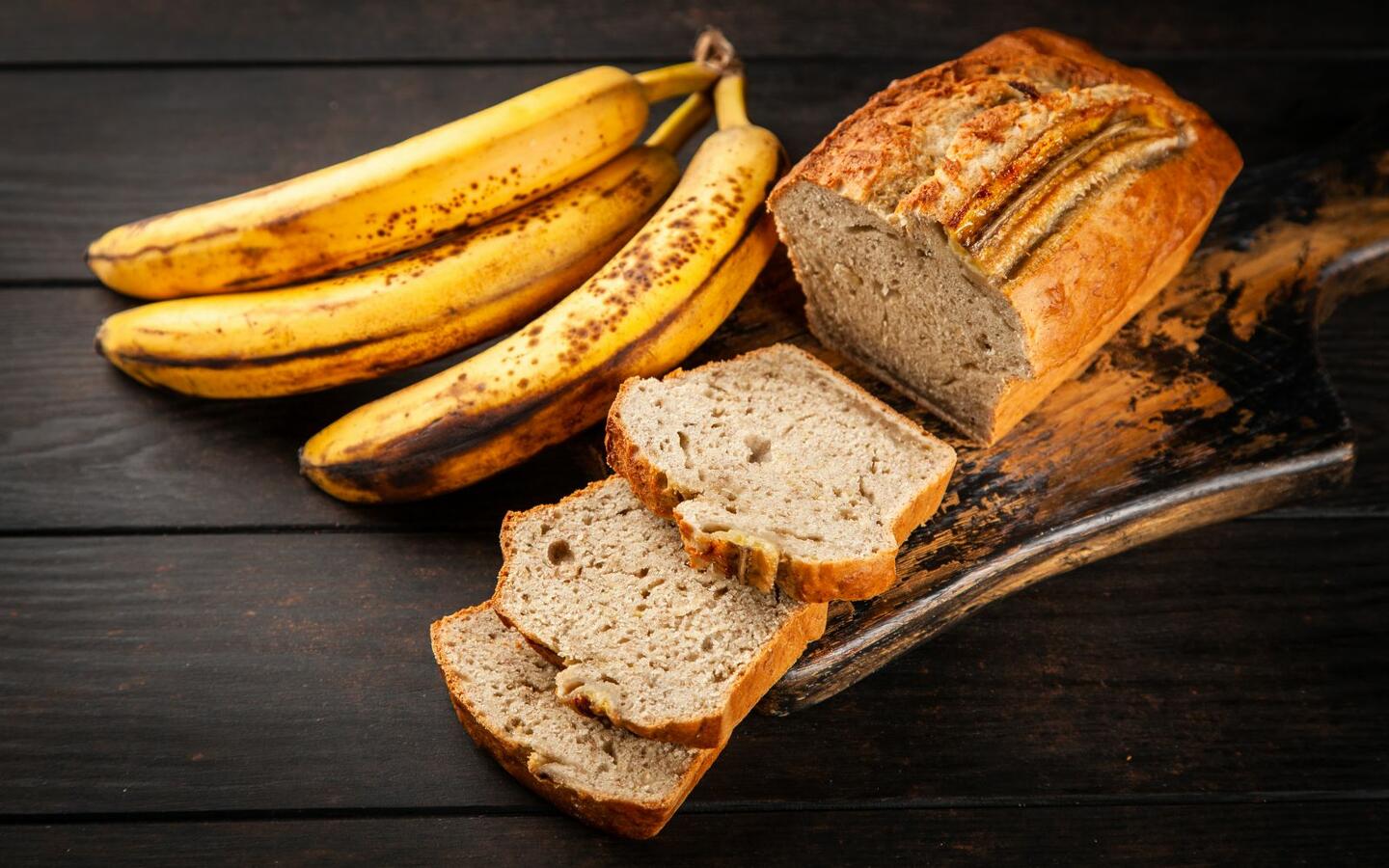Cycling is a great sport for women and men of all ages. From young children to elderly people who want to get fit and healthy without damaging their joints. However, it is not perfect, it has its drawbacks and it might lead to sores, pains and injuries, especially for those who train hard and/or regularly. If you are such a cyclist and you want to avoid problems, have a biomechanical study carried out first.

Even so, the body posture and constant pedaling can cause discomfort. We only work the legs in one direction and within a limited range of motion. This develops – but also shortens – certain muscles, which can lead to muscle imbalances. Don’t worry, it can all be solved. In addition to these simple stretches and a strength training routine to improve your flexibility and muscle strength, these 7 exercises will help you gain balance and stability in hips, knees and ankles:
- Single Leg Sit to Stand Progression
- Kneeling Superman
- Drinking Bird
- Reverse Lunge to High Knee
- One Leg Squats
- Fire Hydrant
- Single leg circle
Single Leg Sit to Stand Progression
How to do it: Sit on a chair or a bed, lift your left leg off the floor. Before you start standing up, put your right foot on the floor, engaging the whole leg. Try to stand up without using your hands and keeping your back as straight as possible. Stand for a few seconds and reverse the movement to sit back down.
How many repetitions: This exercise requires balance to keep the hip, knee and ankle of the weight-bearing leg properly aligned. Start with 5 repetitions on each leg and use your hands at first if it’s too difficult otherwise. Increasing repetitions, doing the exercise more slowly or using a softer surface increases the difficulty.
Which muscles work: Glutes, quads, hamstrings and calves. The important thing is that it strengthens the stability of the legs and pelvis.
Kneeling Superman
How to do it: All fours on the floor or a mat. Knees in a straight line with the hips. Hands in a straight line with the shoulders. Back straight. Extend the left leg until it is parallel to the floor. Do the same with your right arm. You will notice some instability. Keep your balance for 10 seconds. Do the same with your right leg and left arm.
How many repetitions: 10 reps on each side. If you increase the repetitions and time holding the balance or practice on a soft or unstable surface, the difficulty increases. You can also bounce upward or move your raised arm and leg outward and inward maintaining the Superman pose.
Which muscles work: The back muscles (erector spinae, trapezius, quadratus lumborum and rhomboids), gluteus maximus, hamstrings and shoulder muscles (infraspinatus, deltoid, teres minor).
Drinking Bird
How to do it: Stand upright with your arms crossed. Slightly bend the knee of your left leg. Lean the torso forward keeping the arms crossed while extending the right foot backward to form a T-shape with your body. Hold the position for 10 seconds. Return to the starting position and switch legs. When you bend forward, do not look forward, look towards the floor.
How many repetitions: Start with 10 bends on each leg. To make it more complicated, hold the balance for longer or do more repetitions. You can also place both hands in the Superman position, behind your head or behind your back. Holding a weight in each hand also increases the difficulty.
Which muscles work: Mostly glutes and hamstrings. It also strengthens and stabilizes the lower back, pelvis and hips.
Reverse Lunge to High Knee
How to do it: Start standing with feet hip-width apart. Step your right foot back and flex your left hip into a lunge position. The right knee should be a few centimeters off the ground. Then press down with your left heel and lift your right leg forward and up until your thigh is parallel to the ground and your knee is bent at 90 degrees. Follow the movement with your arms as if you were starting to run.
How many repetitions: Start with 10 reps on each leg with the foot that is in motion resting on the floor. Do the exercise without the foot touching the ground to make it more complicated. You can also hold the balance for longer or do more repetitions.
Which muscles work: Quadriceps, groin, hip flexors, glutes, calves and hamstrings.
One Leg Squats
How to do it: Stand next to a wall or chair in case you need support to start off. Lift your left foot off the floor while bending your right knee and placing full weight on your right leg. Now try to do a single leg squat, bending your right knee and hip. Balance with your arms and left leg. The lower you go the better, but you don’t need to go as far as you can. Return to the starting position.
How many repetitions: Do 10 reps on each leg. Start by lowering a few centimeters and increase the difficulty by trying to reach the floor, doing more repetitions or doing the exercise on an unstable surface.
Which muscles work: Balance and stability of all lower joints (hip, knee and ankles). Muscle-wise: mainly glutes, hamstrings and quads. Also other muscles of your legs and abdomen.
Fire Hydrant
How to do it: Get on all fours on the floor. Hands under shoulders and knees on the floor in line with hips. Back horizontal to the floor. Lift your right knee up and out to 45 or 90 degrees as if you were a dog trying to pee at a fire hydrant. You must look at the floor, while the rest of your body must not move. Do not bend your back, do not rotate your hips and do not flex your arms and shoulders.
How many repetitions: Do 30 reps on each leg in alternating sets of 10. If you want to make it more complicated, you can stretch the leg when it is raised, bend the knee again and return to the starting position. You can also place an elastic band above the knees to provide resistance.
Which muscles work: This exercise involves three types of hip movements (extension, external rotation and abduction). It mainly strengthens the gluteus maximus and, to a lesser extent, the abdominal muscles.
Single leg circle
How to do it: Standing, raise your left leg while keeping your foot straight. Make circles with your left leg while keeping your balance. The body should remain upright, do not shift your weight to the supporting leg. Maintain the abdomen and hips engaged.
How many repetitions: Make 20 clockwise rotations drawing circles with one leg. Then with the other. Repeat the movement in the opposite direction. To make the exercise more difficult, increase the size of the circles, raise your leg higher or perform the exercise on an unstable surface.
Which muscles work: This movement increases balance and stability in the leg that is on the ground and improves the mobility of the hip in the other leg. Muscle-wise, it engages the quads, thigh adductors and glutes.




